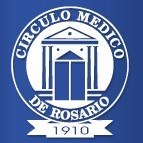Diabetes MODY 2 and 3: report of 4 cases with new mutations
Keywords:
diabetes, MODY 2, MODY 3, unreported mutations, non-deleterious mutationsAbstract
Introduction: MODY diabetes (Maturity Onset Diabetes of the Young) is a group of monogenic diseases, of autosomal dominant inheritance, characterized by non-autoimmune dysfunction of β cells. Hyperglycemia usually appears before the age of 25 and is associated with primary defects in insulin secretion.
Material and Methods: a retrospective study including patients with MODY Diabetes diagnosed in the Endocrinology, Metabolism and Nutrition Service.
Results: a total of 4 patients were diagnosed: 3 cases of MODY 2 DBT and 1 cases of MODY 3. 4 more patients with a diagnosis of diabetes mellitus were also rescued whose genetic studies revealed non-deleterious mutations of the HNF1A enzyme but nevertheless present a clinical behavior compatible with MODY diabetes.
Discussion: this publication describes 3 MODY 2 Diabetes patients (two of them brothers) and 1 patient with MODY 3 whose mutations in the enzymes have no bibliographic precedents. In addition, another 4 cases with a diagnosis of diabetes mellitus are exposed that present non-deleterious and negative mutations for MODY 2 and 3, but that have similar clinical behavior.
Conclusion: the importance is to present three MODY 2 Diabetes mutations and one MODY 3 mutations not previously reported in the scientific literature worldwide.
All patients had the expected behavior of each type of disease: type 2 is stable only with hygienic-dietary measures, as is type 3, which is still at an early age.
Downloads
Published
How to Cite
Issue
Section
License
Copyright (c) 2022 Revista Médica de Rosario - Propietario: Círculo Médico de Rosario

This work is licensed under a Creative Commons Attribution-ShareAlike 4.0 International License.
Licencia Atribución-CompartirIgual 4.0 Internacional (CC BY-SA 4.0)
https://creativecommons.org/licenses/by-sa/4.0/deed.es






